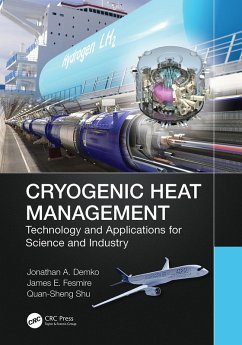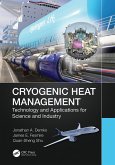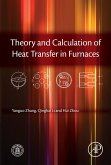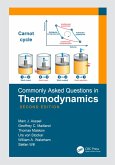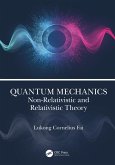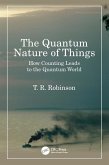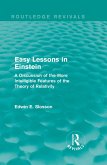The book is written with the assumption that the reader has an undergraduate understanding of thermodynamics, heat transfer, and fluid mechanics, in addition to the mechanics of materials, material science, and physical chemistry. Cryogenic Heat Management: Technology and Applications for Science and Industry will be a valuable guide for those researching, teaching, or working with low-temperature or cryogenic systems, in addition to postgraduates studying the topic.
Key features:
- Presents simplified but useful and practical equations that can be applied in estimating performance and design of energy-efficient systems in low-temperature systems or cryogenics
- Contains practical approaches and advanced design materials for insulation, shields/anchors, cryogen vessels/pipes, calorimeters, cryogenic heat switches, cryostats, current leads, and RF couplers
- Provides a comprehensive introduction to the necessary theory and models needed for solutions to common difficulties and illustrates the engineering examples with more than 300 figures
Dieser Download kann aus rechtlichen Gründen nur mit Rechnungsadresse in A, B, BG, CY, CZ, D, DK, EW, E, FIN, F, GR, HR, H, IRL, I, LT, L, LR, M, NL, PL, P, R, S, SLO, SK ausgeliefert werden.
Based on their great experience in the field, after a clear introduction on heat transfer, the authors address in the first chapters of the book the general problem of cryogenic heat management discussing separately a few common topics: insulation, supports, thermals shields, transfer pipes, storage vessels and vacuum. This choice looks very efficient and makes clear the comparison among the different solutions, each one tightly linked to its specific project. Comparative tables, pictures, and schematics, together with a consistent bibliography, are guiding the reader. In each chapter the specific common topic is addressed through real examples from first-class applications taken from aerospace, large science infrastructures and nuclear fusion, but also from the management and clean transport of the huge quantity of Liquid Natural Gas around the world. Comparison with more common applications in medicine and industry are always part of the discussion.
The second part of the book, from chapter 8 to chapter 13, is dedicated to instrumentation, cryogenic measurements, and a few special topics, discussing their importance and criticalities. I found of particular interest the discussion on current leads and RF couplers. These items are crucial in some important applications, but both represent an unavoidable penetration that creates a direct connection from the cold-mass and the room temperature. Finally, the description of thermal switches and special cryostats for extreme applications are noteworthy too. This final part of the book is very interesting and completes the knowledge transfer from the expert authors to the readers who are expected being involved in the design, choice, or operation of a cryogenic apparatus where the deep understanding of the cryogenic heat management is crucial.
- Professor Carlo Pagani, University of Milano and INFN Emeritus Scientist, 23/08/2022.

